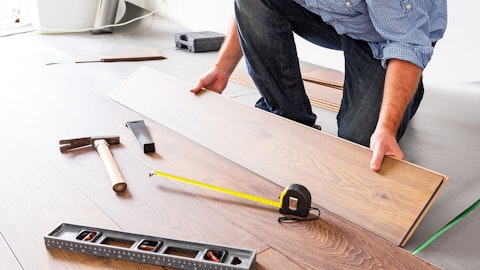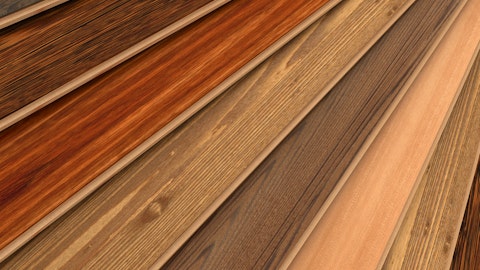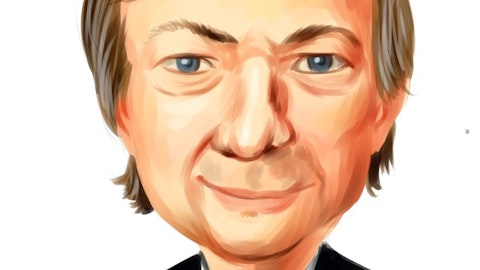I think your other question was around the new investments. The new investments are all in areas that are growing and that we’ve had capacity limitations, and we think they’re preparing this for a growth cycle as we go to the — as we come out of this cycle at the other end, we’re putting in — the pieces are — so we’re adding laminate, which has been a growing category in the pieces as we go through. And it’s expanding because it is becoming more accepted as a waterproof option, which is a technology we’ve brought in as an alternative to LVT and it’s actually more resistant to scratches and more durable. We’re increasing our quartz countertop business, which our lines has been running full. We’ve been supplementing with imported products to support greater sales, and that should be starting up at the end of this year.
The investments in LVT In the western part of the country should support broader U.S. — broader local-based production of it and should give us advantages by having both East Coast and West Coast production. And then we can supplement or not, source products we’re doing with the same equipment. We are out of production in our ceramic slab businesses, which is based in Europe. it’s a growing category that’s taking the high-end marketplace as another alternative. And so we’re increasing it. And finally, we’ve just started up a new insulation plant in Europe. in the U.K. It puts us in a new region that we haven’t been in, and it’s starting up now and expanding its production. So we’ve chosen the parts of the business that have the growth — largest growth potential.
And we think as we go into ’24, it’s going to pay us a lot of benefit.
Phil Ng: Just a point of clarification on that productivity comment, Jeff. you said it’s a catch-all, less productivity versus last year, but on a year-over-year basis, is that still a good guy or you would expect it to be a negative headwind on a year-over-year basis?
James Brunk: On a year-over-year basis, when we get outside the first quarter, it should become more of a positive. Again, what you have is when you’re running the facilities, even if it’s not a complete shutdown, if you’re running slower, you do have inefficiencies both in labor and material that are going to come through the productivity line.
Phil Ng: Okay. Super. Thanks a lot for the color.
Operator: Our next question comes from Susan Maklari from Goldman Sachs. Please go ahead.
Susan Maklari: Thank you. Good morning.
Jeff Lorberbaum: Good morning, Susan.
Susan Maklari: My first question is, can you help us think about that sequential lift that you expect for the second quarter relative to what we normally see in sort of historical years? Should it be bigger than what we’ve otherwise seen, given some of the factors that you outlined? And then how do we think about the cadence through the year? Is it reasonable to think that first quarter should be the low point?
Jeff Lorberbaum: So going into the first quarter, residential sales are slowing and customers are minimizing the inventory. So we’re expecting them to keep their inventories low at this point. We are using high-cost inventory levels in the first quarter. Production volumes are lower than last year when the business benefited from a rebound we just talked about. There’s more pressure on pricing and mix due to the industry volume and competition trying to utilize facilities as we are. We see inflation impacting our labor costs around the world as we start raising the labor rates, and we’re actually putting some more investments in new products to reposition some of the pieces to optimize our volume this year. With this, we’re anticipating improving conditions as we go into the second quarter with lower costs.





